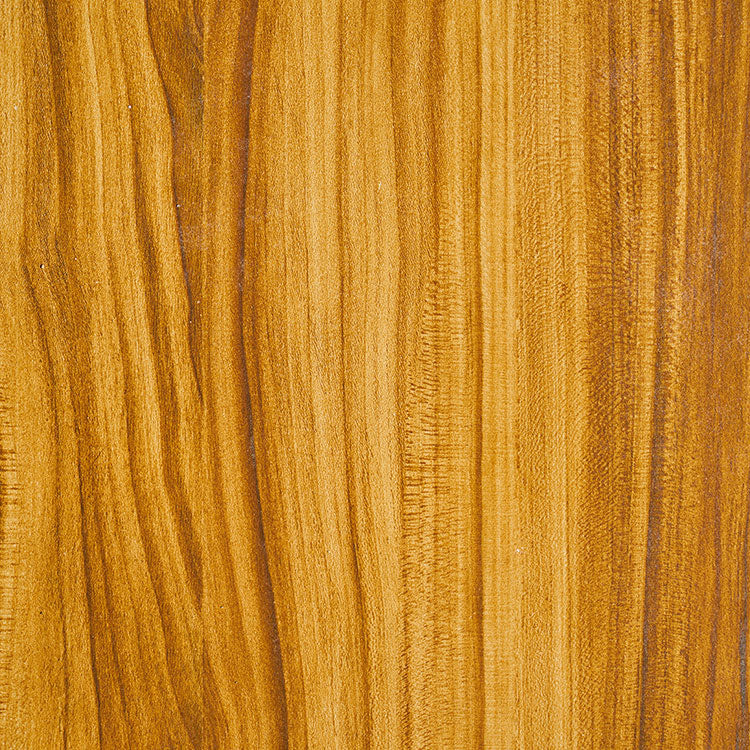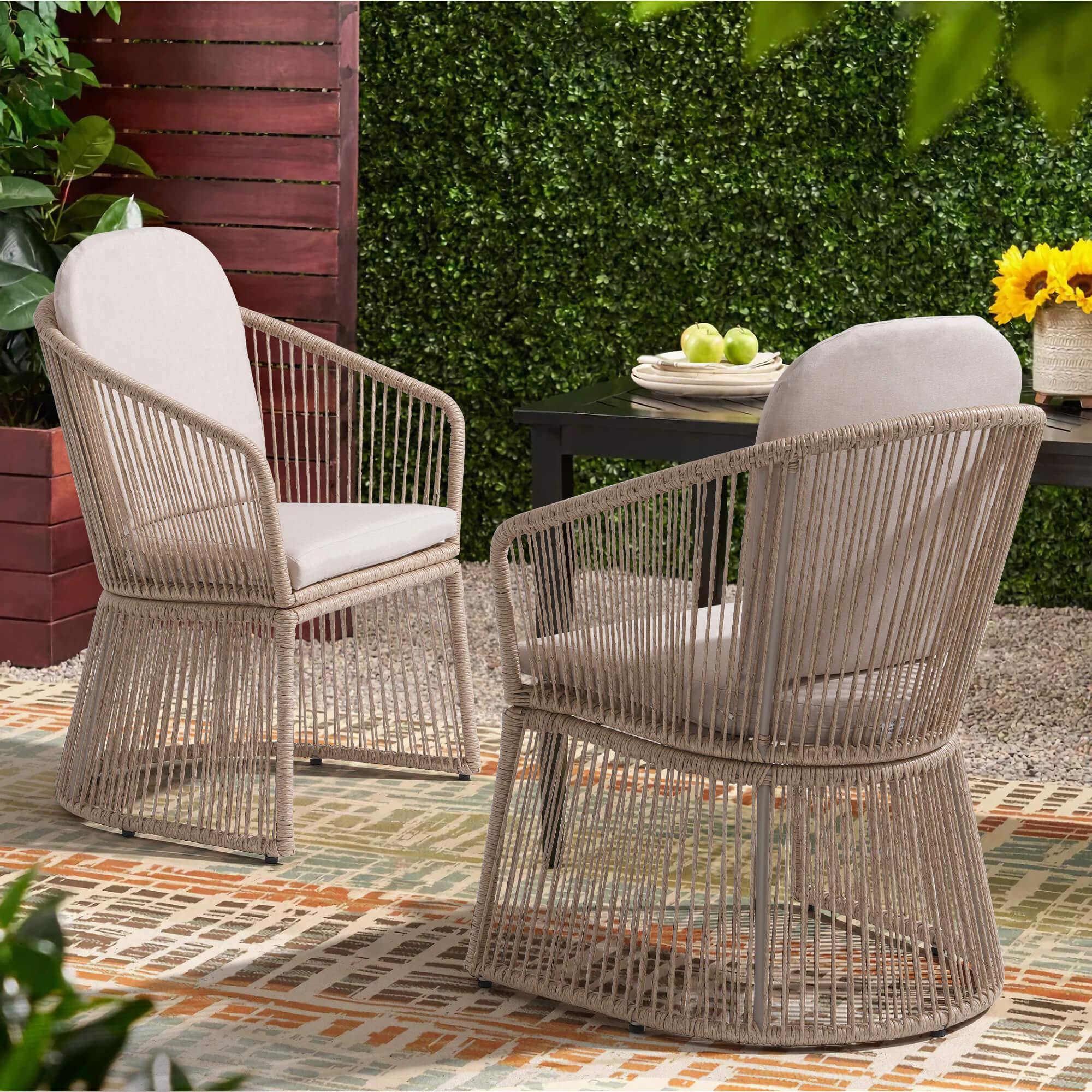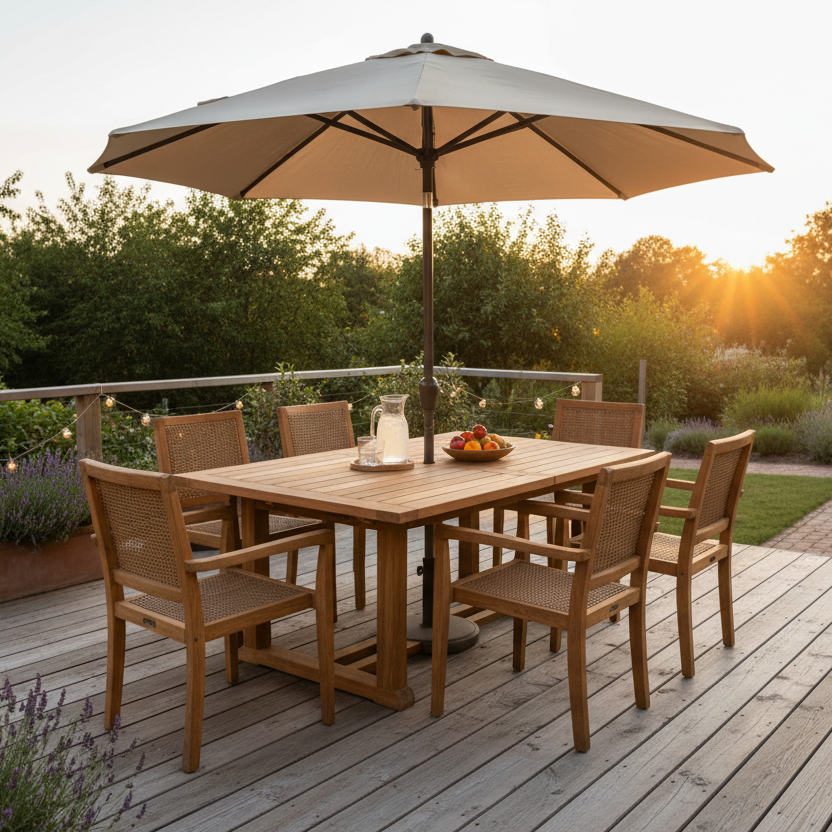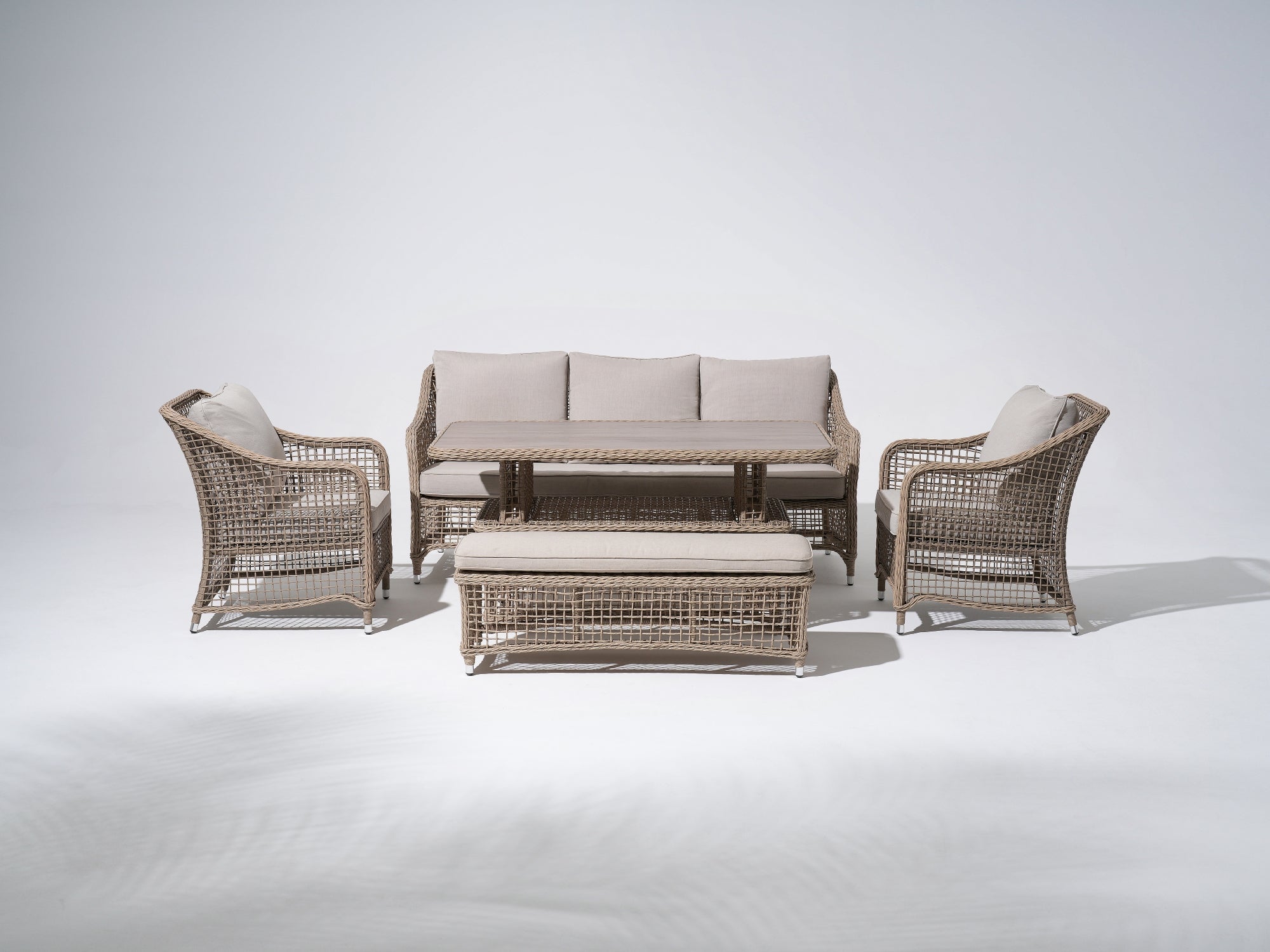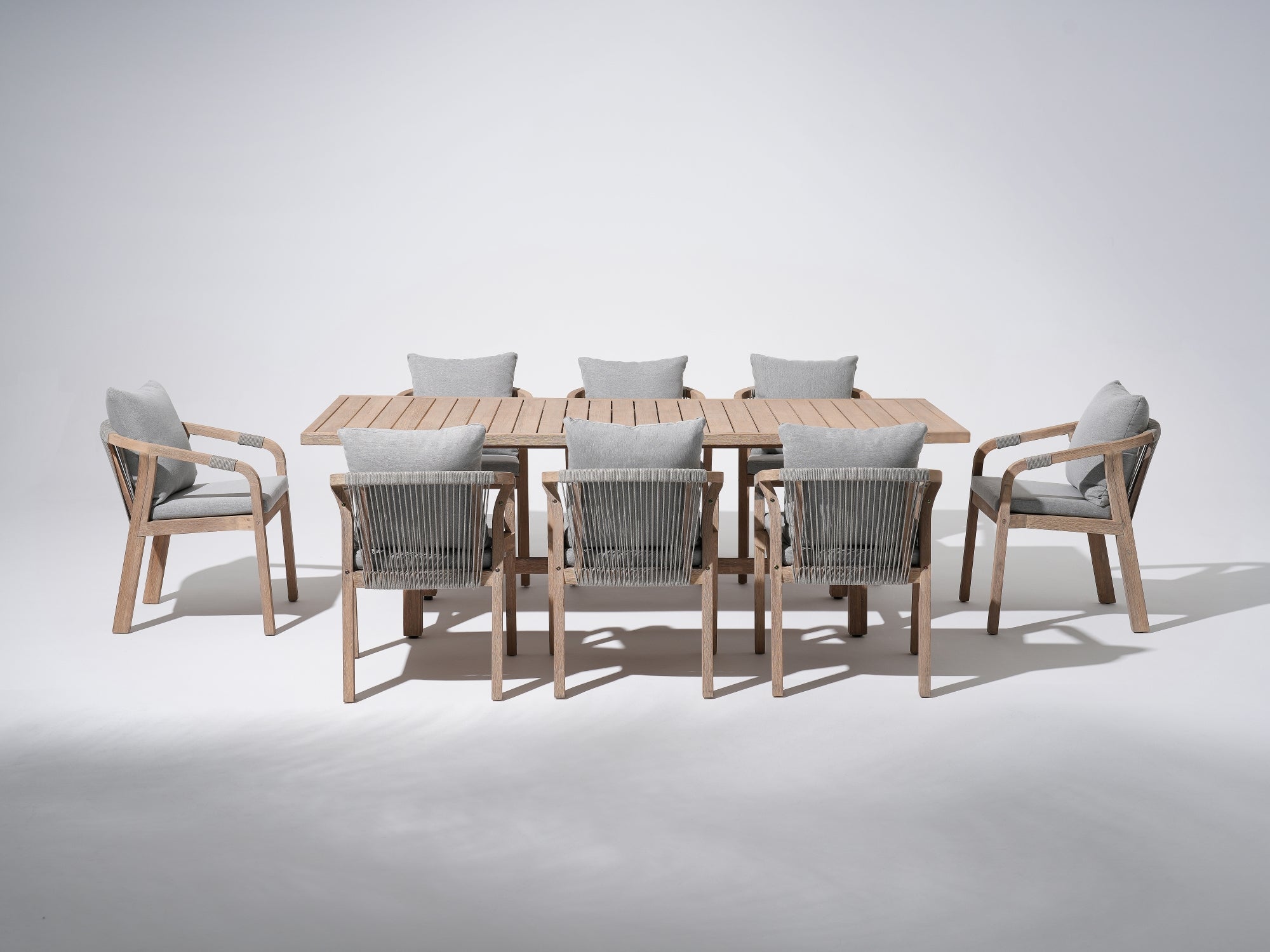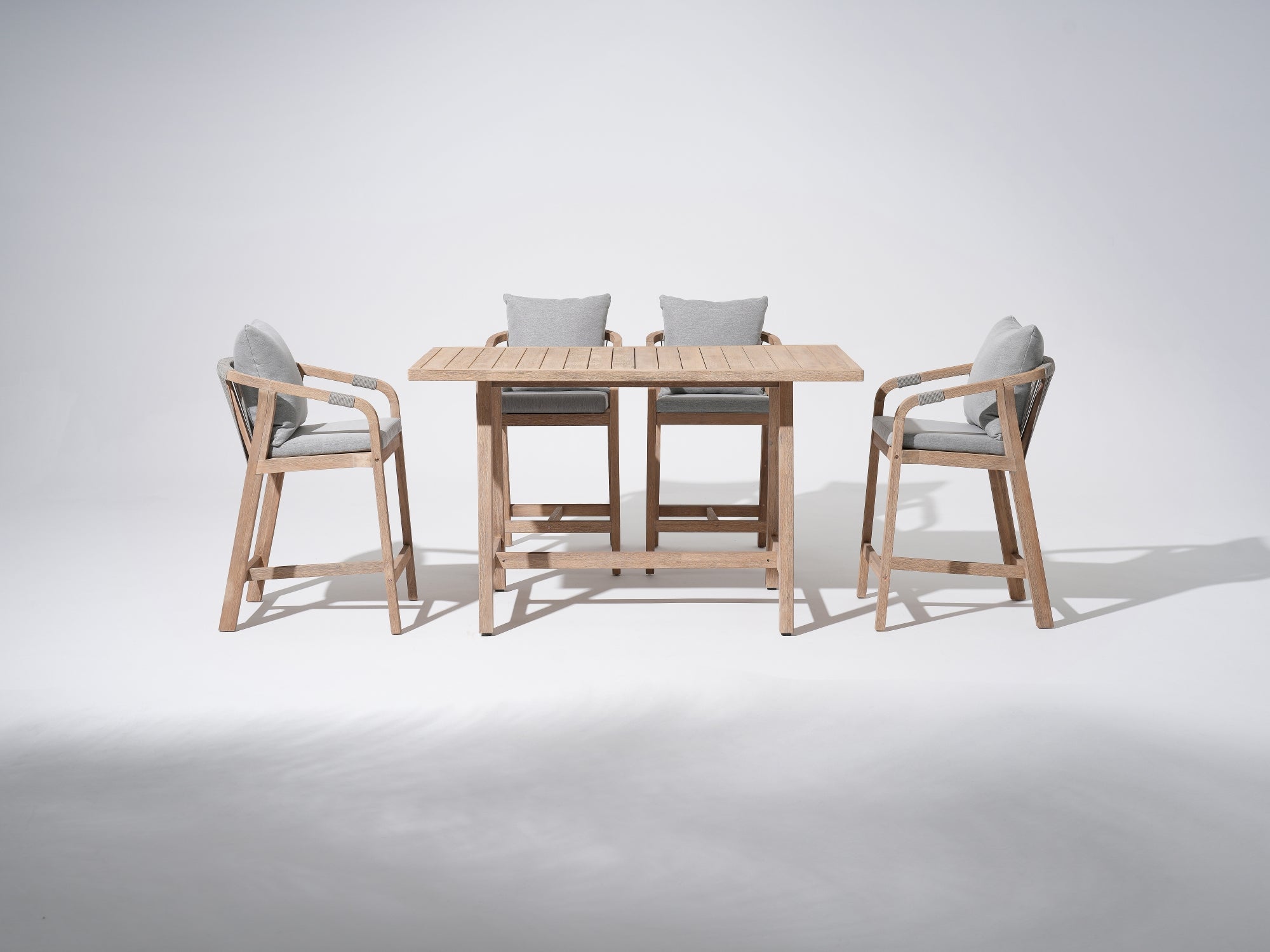For a long time, teak wood has been considered a treasure in the outdoor furniture-making world. The colossal fact is that teak wood has several outstanding characteristics rarely found in regular trees. Its status as a tropical hardwood species is mostly to blame.
Even though real teak wood is a gem, it’s always hard to identify authentic ones in the wood market. Even those who believe they can tell genuine teak wood from fake lookalikes can easily fall for fakes.
That said, we’re here to rescue you from sly vendors. Scroll down for more information about teak wood.
What Is Teak Wood?
As hinted earlier, teak wood is a tropical hardwood harvested from the teak tree, scientifically named Tectona grandis. This tree is indigenous to the tropics of South and Southeast Asia. It thrives in mixed-tree monsoon forests in countries such as Sri Lanka, Indonesia, Burma, India, and Thailand.
However, teak also grows in large plantations around the world. You can stumble upon teak trees in Africa, America, and the Caribbean, where it’s cultivated chiefly for timber. Teak tree cultivation began to sustain the massive demand since most of its native sources are heavily declining due to overlogging.
Remember, the vast use of teak woods began thousands of years ago, even before the colonization era. Teak wood's durability, water resistance, and luxurious inherent beauty made it highly valued by ancient cultures like Egyptians, Greeks, and Romans. It was a prized commodity and material in shipbuilding, temple construction, and palaces, particularly places that were held in high regard.
Now let’s dive deeper into the oasis of teak wood properties and characteristics.
Teak Wood Valuable Properties
When you buy products made from authentic teak wood, you receive these benefits in full. Because of its wonderful qualities, it’s mostly preferred for outdoor furniture in the modern day.
- Natural durability: Teak wood is highly durable and resistant to decay, fungi, pests, and insect infestations, which augment its durability and strength.
- Water resistance: Teak wood belongs to the mint family. Hence it’s naturally porous but waterproof because of its high oil content. That helps prevent swelling, warping, and rotting.
- Unique grain patterns: The grains of teak wood are often straight and interlocking with knots here and there, giving off an impressive rustic appeal. But sometimes, the grains are wavy, especially in low-grade teak timber. Plus, you’ll notice a smooth surface with very conspicuous rings when cut or milled.
- Color variations: Teak wood colors vary depending on the timber grade and teak wood species. For instance, Burma teak has a golden brown pigment, while Indonesian teak wood is light brown. This offers versatility and alignment with your tastes and preferences.
- Sustainable wood: Most authentic teak wood suppliers obtain it from legally approved sources, especially plantations and reforested forests. This protects the degraded indigenous teak woods, conserving the natural forests.

Why Identify Original Teak Wood?
It’s important to identify original teak wood with the following factors in mind. These considerations validate the need for intensive scrutiny that spans beyond longevity and aesthetic beauty. It’s a highly sought-after wood type, making it prone to counterfeits.
Product Authenticity
If you source the natural teak wood, and not it's fake, you achieve authenticity in furniture and other woodcrafts. Furniture made from original wood meets the durability and lifespan expectations. Furthermore, you're sure to enjoy the already-known advantages, and in a business setting, you raise the venture's reputation.
Imagine the disappointment you feel upon realizing your teak furniture has cracked or broken prematurely. This suggests additional repair expenses, which interfere with the beautiful appearance. So, aim to look for genuine teak for the most satisfying teak furniture sets.
Pricing and Value
It also significantly influences the pricing and value of teak furniture. The original teak wood is highly prized for its exceptional properties, including natural beauty, durability, and waterproofness. For this reason, teak wood is often expensive compared to other wood types in the market.
Environmental Considerations
Getting genuine teak wood positively impacts the environment. It’s a step towards conserving the environment because real teak wood is sustainable. It lasts long enough to avoid disposal and premature replacement, and it’s recyclable, including its wastes during production.

Methods to Identify Real Teak Wood
The unanswered question here is how do you identify real teak wood with the naked eye? Coming next is clarification on what to check keenly to ascertain you’re dealing with teak wood.
Grain Pattern and Texture
Discerning teak wood from other woods, the grain of teak is straight, even, and finely grained. These grains often interlock and highly contribute to the teak’s strength and durability. But note that they may be slightly wavy in some species or due to age.
Color Variations
Real teak color often has a warm rich color with a natural sheen. When freshly cut, teak wood is a golden-brown hue that eventually turns into a silvery-gray patina with age. The color of fake teak wood may appear more artificial-looking.
Scent
The aroma of real teak is distinct and closely similar to leather. Freshly cut or sanded teak releases a powerful aromatic scent as it has natural scent-smelling oils. This special scent might not be released by fake teak.
Weight
Naturally, teak is a very dense and heavy wood. Therefore authentic teak products should have substantial weight in them. If a teak product feels light and fragile, then it's not made from genuine teak wood.
Consultations with Experts
Getting in touch with expert wood professionals, especially furniture craftsmen, is helpful when you still cannot identify teak wood by yourself. These experts will offer useful insights about the visual and tangible characteristics of teak wood. They can also provide you with guidance on verifying certified teak products.
 Involving them enhances your ability to accurately distinguish fake teak wood from original teak wood. Keep seeking advice from them whenever you feel stuck.
Involving them enhances your ability to accurately distinguish fake teak wood from original teak wood. Keep seeking advice from them whenever you feel stuck.

Common Teak Wood Misconceptions
Despite the distinct characteristics that set teak wood apart from other woods, these common misconceptions may bring confusion when identifying teak wood.
Misconception 1: Any wood labeled as “teak wood” is teak wood.
Just a simple label on the product doesn’t justify the wood's being genuinely what the label says. Some may use this tactic to fool you into buying the wood, while others use the term teak wood to mean the wood owns the appearance, that is, the grain and color, of teak wood. Instead of relying on the label, use unique characteristics such as the natural oils, the fragrance, and the grain pattern to identify teak wood.
Misconception 2: Teak wood exists in a specific color and grain pattern.
Well, the reality is teak wood varies in color and grain patterns. Not all teak wood in the market looks the same and this variation depends on the tree wood species, the age of the tree, and the tree part the wood was sourced from. You might come across a new teak wood color but that doesn’t prove that is not authentic teak wood.

Applications of Teak Wood
As a popular wood material in most regions of the world, teak wood has a variety of uses. Teak wood is used extensively outdoors because of its superior strength and durability.
-
Outdoor furniture making: It's a perfect choice for making all kinds of furniture, including chairs, seats, tables, stools, and more. The use extends to setting up nice wooden gazebos, pergolas, and pavilions.
- Boat building: Wood's use in boat and shipbuilding began in the ancient era when it was a significant construction material.
- Outdoor decking and flooring: For an exotic outdoor space, teak wood can be used for the decking floor.
- Sculptures and wood crafts: In the art industry, it can be carved into elegant wood sculptures that show unique talent and creativity. You can also use it in your DIY art projects to make things like a storage bin, wood clock, or candle holder.

Conservation Methods and Sustainable Sourcing
Conservation methods of teak wood are crucial in maintaining the long-term availability of this precious resource and preserving the indigenous teak forests. Due to overwhelming deforestation in the forests, measures and healthy practices have been developed over time to harvest teak wood responsibly and reduce the environmental impact of its sourcing.
Certification programs such as the Programme for the Endorsement of Forest Certification (PEFC) and Forest Stewardship Council (FSC) have been established to ensure sustainable sourcing of teak wood and largely achieve subtle forest management. As a result, wood processing companies obtain their raw material only from credibly certified forests. Certified teak wood products provide satisfaction to the customer, knowing that their teak wood was sourced in an environmentally conscious manner.
Besides responsible harvesting and certification programs, alternative sourcing has been created to minimize reliance on forest-grown sources. Plantations are on the rise worldwide, and agroforestry is being embraced. Actually, most teak woods nowadays come from these legal alternative sources.
Governments have enforced selective logging and reforestation efforts to keep the native forests alive. The high demand for teak wood led to severe deforestation and overlogging, which had almost spiraled out of control in the past. Countries such as Myanmar banned log exportation to reduce overlogging in their degrading natural forests.

Wrapping Up
The proper way to identify real teak wood is to pay attention to the key characteristics and seek guidance from wood professionals. In addition, always seek to obtain your teak wood from certified and environmentally responsible manufacturing companies.
Teak wood is not teak wood until you prove using the required properties it should possess. Check out our collection of hardwood outdoor furniture on Jardina as we continue to ensure the sustainability of our services.


